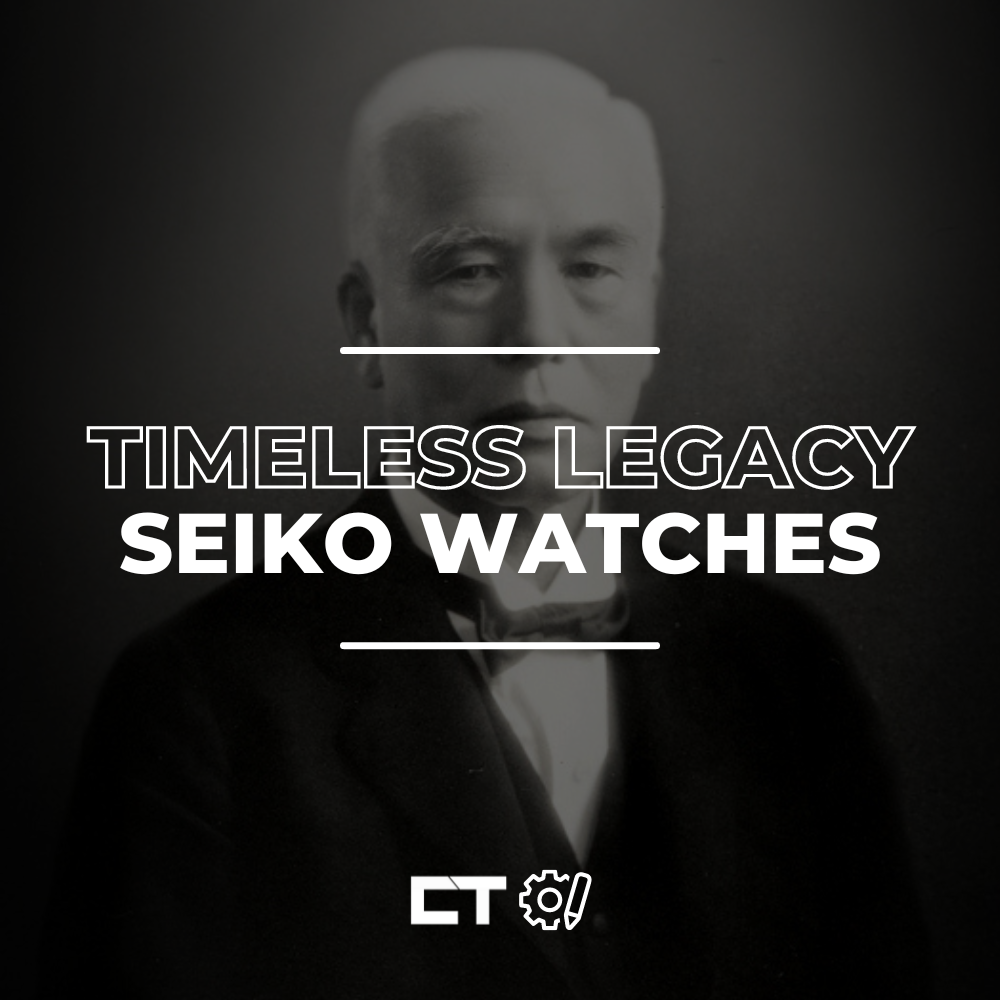Free & Fast USA Shipping Learn More
The Timeless Legacy: A Comprehensive History of Seiko Watches

Introduction:
Seiko, a renowned Japanese watchmaking company, has left an indelible mark on the world of horology with its exceptional craftsmanship, technological innovations, and timeless designs. From its humble beginnings in 1881 to becoming a global leader in the watch industry, Seiko has continuously pushed boundaries, redefining precision and reliability. This article aims to take you on a journey through the rich history of Seiko watches, highlighting key milestones and notable contributions that have shaped the brand’s legacy.
- The Founding Years (1881-1924):
Seiko traces its roots back to 1881 when Kintaro Hattori opened a small watch and jewelry shop in Tokyo, Japan. Initially named “K. Hattori,” the shop laid the foundation for what would eventually become Seiko. Hattori’s unwavering commitment to excellence and determination to create superior timepieces led to the establishment of the Seikosha factory in 1892. Seikosha’s pocket watches quickly gained a reputation for their accuracy, establishing the company as a prominent player in the Japanese watch industry.

- Pioneering Wristwatches and the Laurel Collection (1924-1950):
In 1924, Seiko unveiled its first wristwatch, marking a significant shift in the company’s focus. This move reflected the changing preferences of consumers and the increasing popularity of wristwatches over traditional pocket watches. Seiko’s wristwatches gained widespread recognition for their precision, durability, and aesthetic appeal.
During this era, Seiko introduced the Laurel collection, named after the laurel wreath, a symbol of success. The Laurel timepieces showcased Seiko’s commitment to quality and innovation, featuring mechanical movements and elegant designs that captured the essence of the time.
- The Birth of the Seiko Brand (1950-1969):
In 1953, Seiko merged its two key subsidiaries, Suwa and Daini, to form the Seiko brand we know today. This consolidation brought together the expertise and resources necessary to further elevate Seiko’s watchmaking capabilities.
Seiko introduced several notable advancements during this period. In 1956, it unveiled Japan’s first self-winding wristwatch, the Seiko Automatic. Two years later, Seiko released the Marvel, a timepiece with a high-quality shock-resistant design, reinforcing the brand’s commitment to durability and precision.
- Quartz Revolution and the Astron (1970s):
The 1970s witnessed a seismic shift in the watch industry with the advent of quartz technology. Seiko, at the forefront of this revolution, introduced the Seiko Astron in 1969, the world’s first quartz wristwatch. The Astron revolutionized timekeeping, offering unprecedented accuracy and reliability.
Seiko’s quartz innovations continued to flourish, and by the mid-1970s, the brand unveiled the Quartz Diver’s 150M, popularly known as the Seiko “Tuna.” This groundbreaking timepiece featured a robust construction, water resistance, and a quartz movement, making it a favorite among divers and watch enthusiasts alike.
- Mechanical Masterpieces and Grand Seiko (1980s-Present):
While Seiko embraced quartz technology, the brand remained dedicated to preserving the artistry and craftsmanship of mechanical watchmaking. In 1988, Seiko established the Grand Seiko line, a collection of high-end mechanical watches known for their precision, elegance, and attention to detail. Grand Seiko timepieces quickly garnered international acclaim for their exceptional quality and craftsmanship.
Seiko’s pursuit of mechanical excellence continued with the release of the Spring Drive movement in 1999. This innovative technology combined the best attributes of quartz accuracy with the traditional mechanics of a mechanical watch, creating a truly unique timekeeping experience.
- Technological Advancements and Global Expansion:
Seiko has consistently pushed boundaries in watchmaking technology. The brand introduced the Kinetic movement in 1986, a fusion of automatic and quartz movements powered by the movement of the wearer’s wrist. In 2012, Seiko unveiled the Astron GPS Solar, a watch that connects to GPS satellites, enabling automatic time and timezone adjustment.
Over the years, Seiko has expanded its presence globally, establishing subsidiaries and manufacturing facilities in various countries. The brand’s commitment to excellence and innovation has resulted in a diverse range of timepieces, including sports watches, dress watches, chronographs, and more.
Conclusion:
Seiko’s rich history is a testament to its unwavering pursuit of excellence, innovation, and dedication to preserving traditional craftsmanship. From pioneering wristwatches to groundbreaking quartz technology and the mastery of mechanical movements, Seiko has continuously pushed the boundaries of what is possible in watchmaking.
Today, Seiko remains an iconic brand, celebrated for its remarkable timepieces that blend cutting-edge technology with timeless design. Whether it’s a Grand Seiko, an Astron, or any other Seiko watch, each timepiece embodies the brand’s legacy of precision, reliability, and innovation. As Seiko continues to evolve and shape the future of horology, its enduring commitment to quality ensures that its watches will continue to grace wrists worldwide for generations to come.


